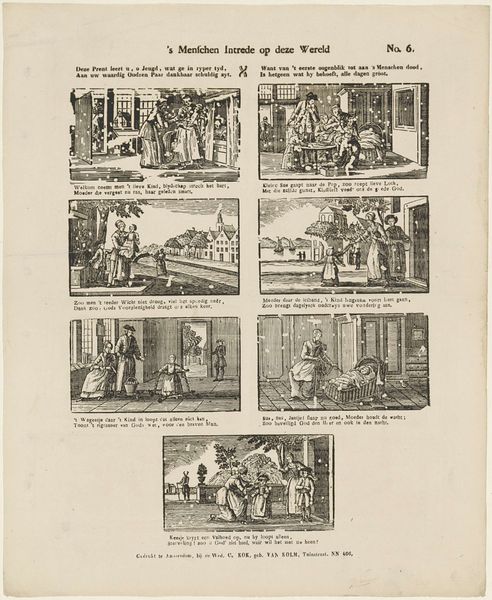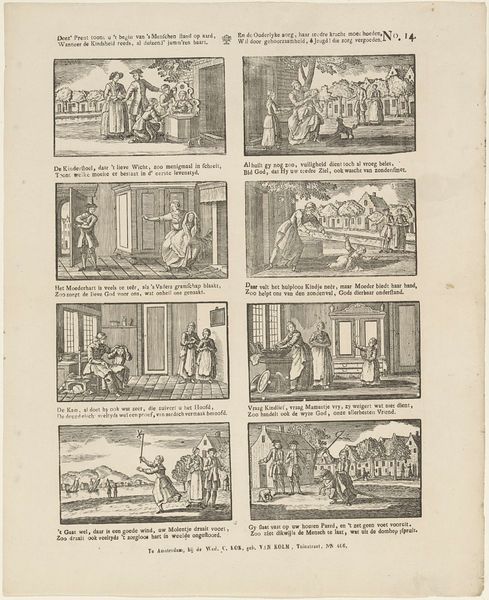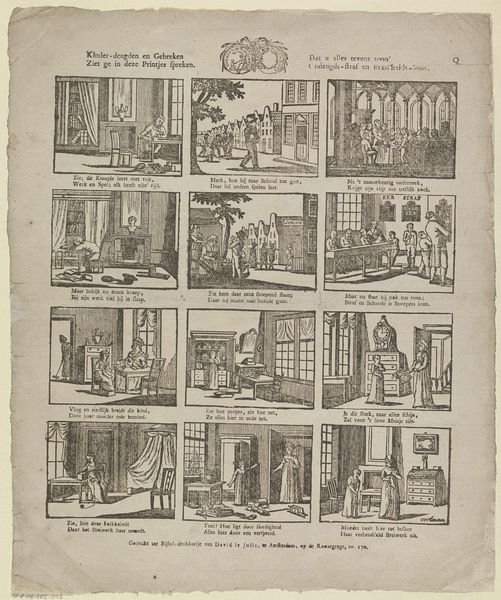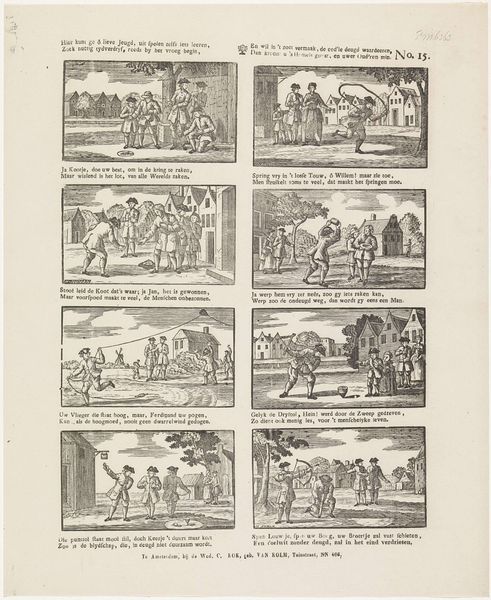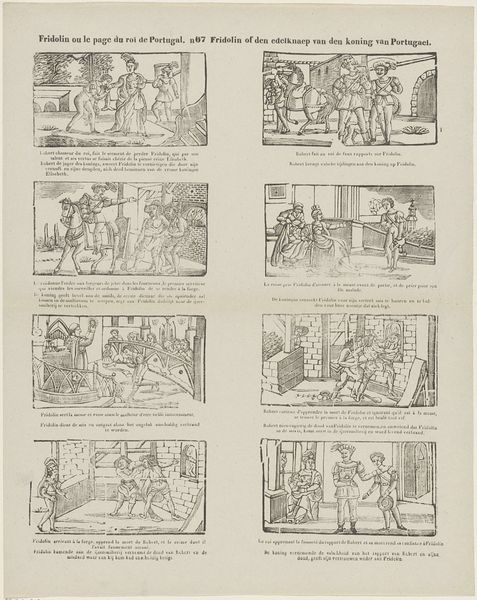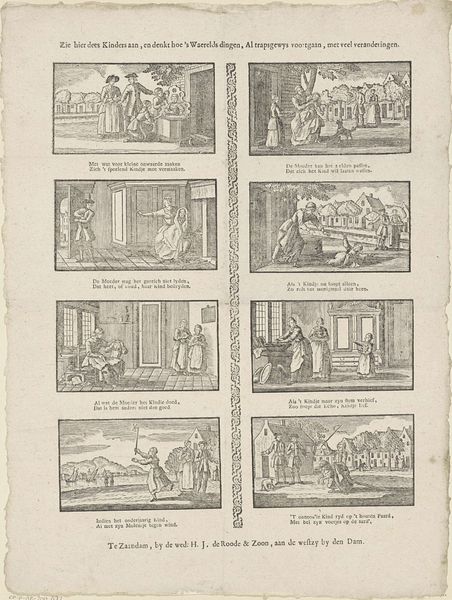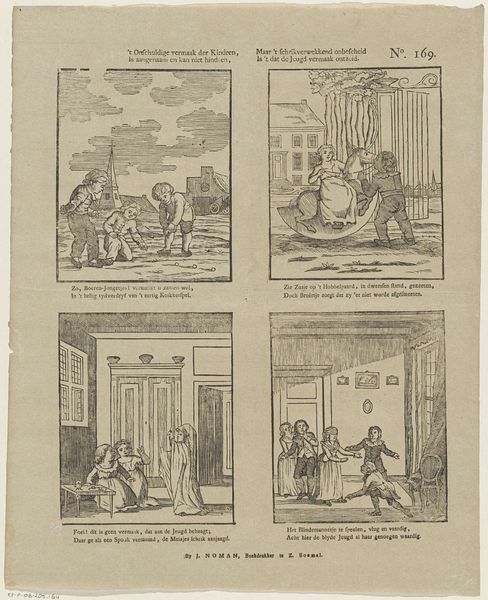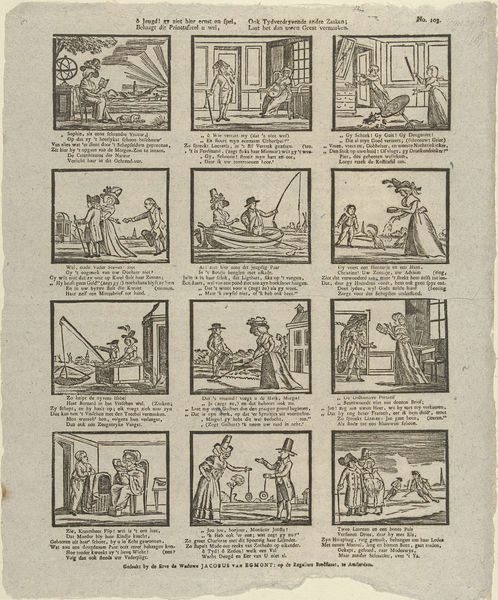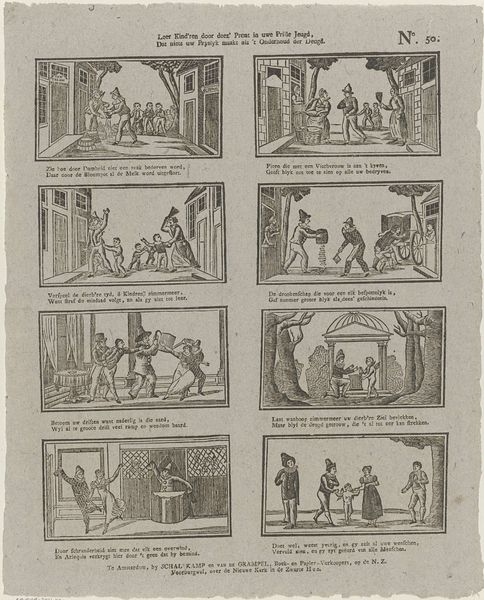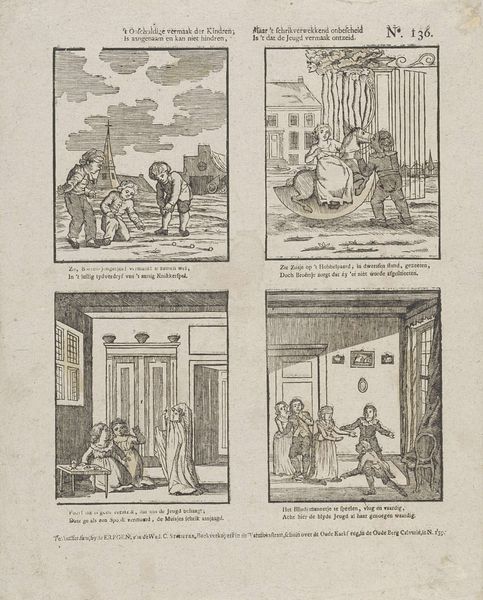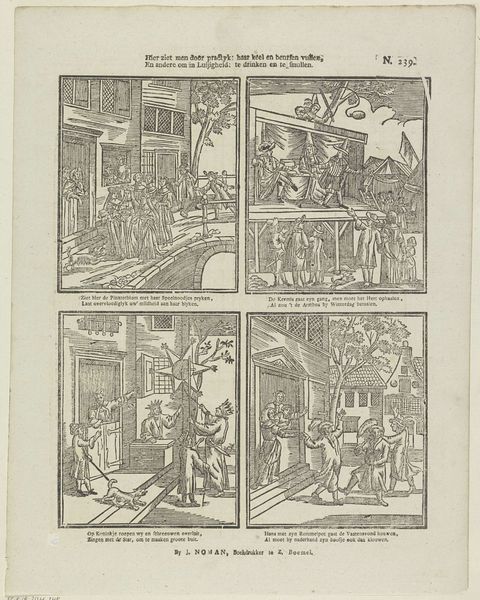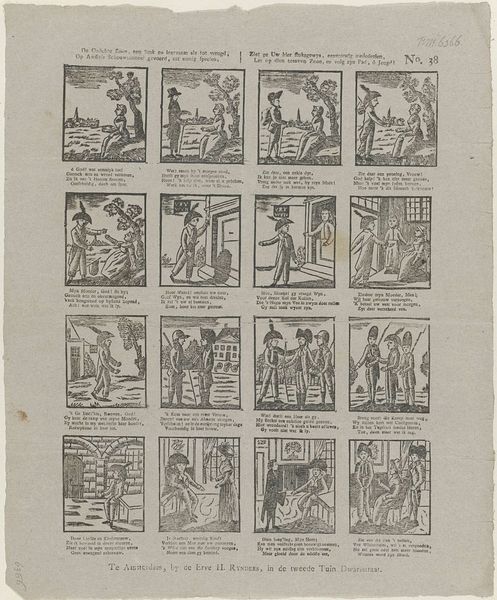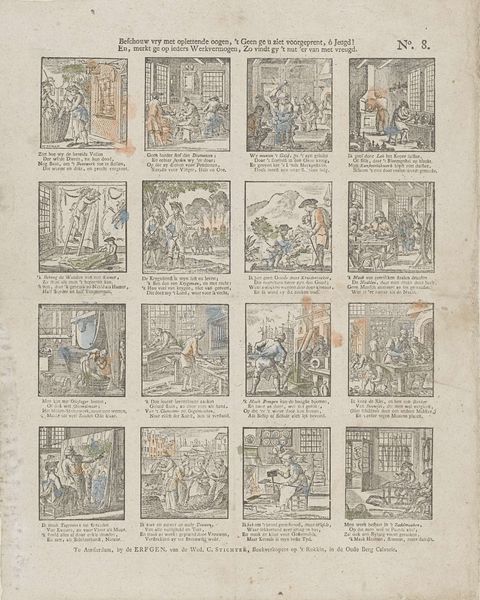
Kinderen volg uw ouders raad, toont gehoorzaamheid, / Vlied 't beginzel van het kwaad, leer altoos met vlyt, / Dan geeft vader u zoo graag, ook een speelens uur, / Dan valt moederlief haar zorg, in 't geheel niet zuur 1842 - 1866
0:00
0:00
print, engraving
#
narrative-art
# print
#
folk-art
#
genre-painting
#
engraving
Dimensions: height 394 mm, width 321 mm
Copyright: Rijks Museum: Open Domain
This print, made by the widow C. Kok-van Kolm, likely in the late 1700s, uses etching – a chemical process employing acid to make an image in a metal plate, which is then inked and printed onto paper. The etcher’s skill is evident in the detailed linework which creates scenes of domestic life, complete with moralizing captions. It's no accident that printmaking flourished in the Netherlands. The country was a hotbed of mercantile capitalism, and prints were perfectly suited to mass production and broad distribution. It's worth considering the labor involved, from the mining of the metal, to the production of acids, to the artist's work, to the printing itself. Each stage relies on human effort, connecting the print to complex social and economic systems. Ultimately, this object shows how so-called ‘minor arts’ like printmaking can be deeply entwined with the values and material conditions of their time. Appreciating this context allows us to look beyond traditional categories of art and craft.
Comments
No comments
Be the first to comment and join the conversation on the ultimate creative platform.
